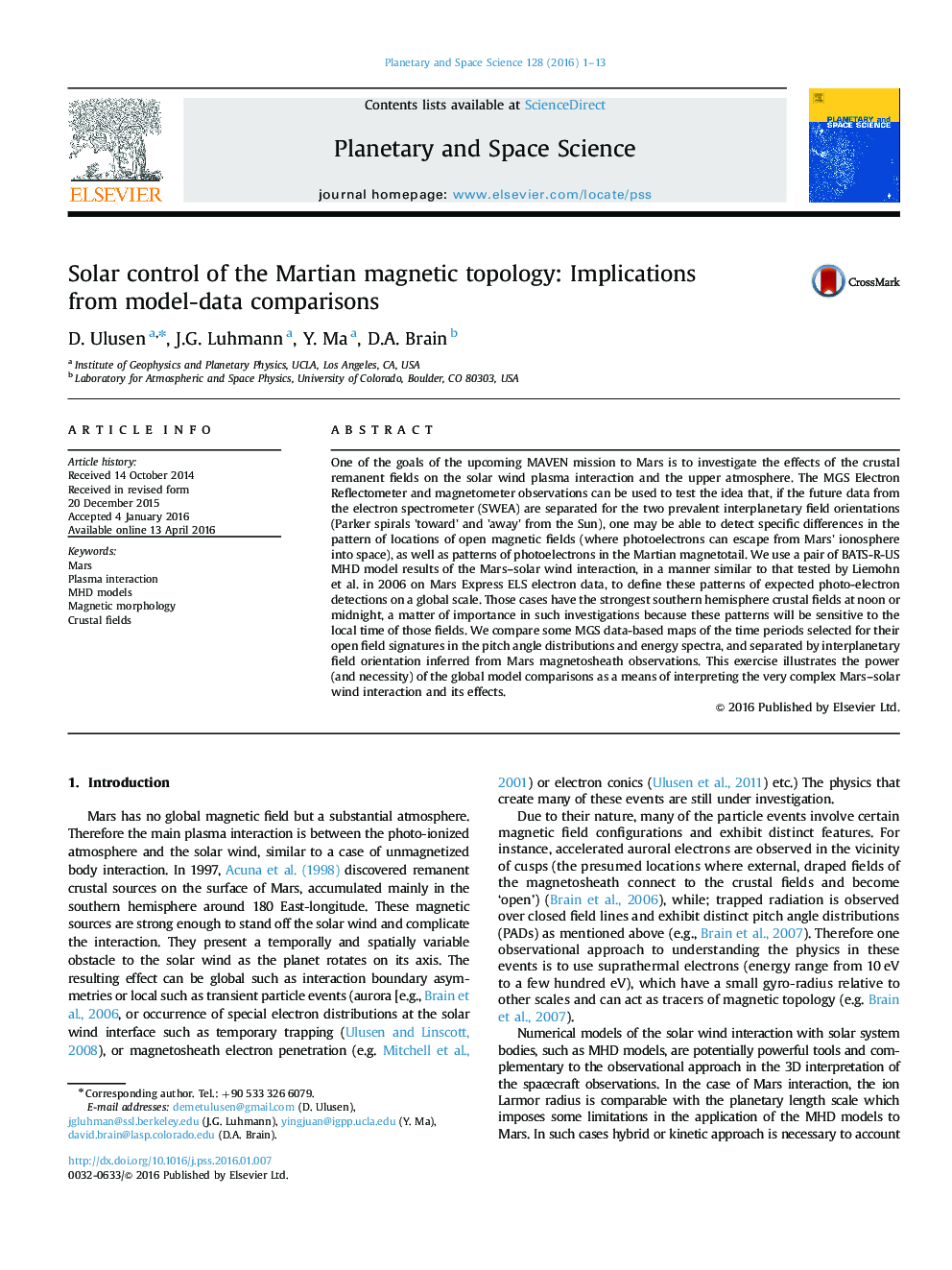| کد مقاله | کد نشریه | سال انتشار | مقاله انگلیسی | نسخه تمام متن |
|---|---|---|---|---|
| 1780877 | 1523912 | 2016 | 13 صفحه PDF | دانلود رایگان |
• We compare Mars MHD model with MGS data for changing IMF and crustal field location.
• Results confirm crustal field and IMF orientation create local and global effects.
• Results show model reproduces magnetic topology changes for opposite IMF directions.
• MHD models is effective in interpreting Mars–solar wind interaction and its effects.
One of the goals of the upcoming MAVEN mission to Mars is to investigate the effects of the crustal remanent fields on the solar wind plasma interaction and the upper atmosphere. The MGS Electron Reflectometer and magnetometer observations can be used to test the idea that, if the future data from the electron spectrometer (SWEA) are separated for the two prevalent interplanetary field orientations (Parker spirals ׳toward׳ and ׳away׳ from the Sun), one may be able to detect specific differences in the pattern of locations of open magnetic fields (where photoelectrons can escape from Mars׳ ionosphere into space), as well as patterns of photoelectrons in the Martian magnetotail. We use a pair of BATS-R-US MHD model results of the Mars–solar wind interaction, in a manner similar to that tested by Liemohn et al. in 2006 on Mars Express ELS electron data, to define these patterns of expected photo-electron detections on a global scale. Those cases have the strongest southern hemisphere crustal fields at noon or midnight, a matter of importance in such investigations because these patterns will be sensitive to the local time of those fields. We compare some MGS data-based maps of the time periods selected for their open field signatures in the pitch angle distributions and energy spectra, and separated by interplanetary field orientation inferred from Mars magnetosheath observations. This exercise illustrates the power (and necessity) of the global model comparisons as a means of interpreting the very complex Mars–solar wind interaction and its effects.
Journal: Planetary and Space Science - Volume 128, 1 September 2016, Pages 1–13
